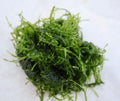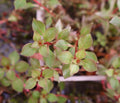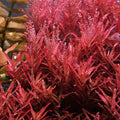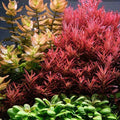Fun Facts about Aquatic Plants and How They Boost Your Tank
Maintaining an aquarium is one of the most rewarding hobbies. You might have started your home fish tank just to bring a little bit of life to your living room or to entertain kids.
But once this hobby starts, it can quickly turn into an obsession that transforms you from a hobbyist into an aquarist. As an aquarist, you will soon strive to create an ideal and realistic habitat for those beloved fish species that are giving you so much joy.
It is a lot of fun to improve and upgrade your tank by adding all sorts of interesting fish species. But switching from those fake plastic fish tank plants to real-life aquatic plants is one of the most exciting parts of fishkeeping.
In this guide, we are going to take a look at a couple of fun facts about aquatic plants and how they can boost your fish tank.
Aquatic Plants Can Improve Your Ecosystem
Aquatic plants look a lot better than faux tank plants. But that is not the only benefit they offer. These plants can make a huge improvement to your tank's ecosystem.
These plants are helpful for increasing oxygen levels in the water, they assist in purifying your tank, act as a food source for fish species and so much more. In short, your fish will be much happier when you have real plants.
Not All Aquatic Plants Require Substrate
Some aquatic plants like the ones you see growing underwater at the bottom of the tank do require a substrate (a type of gravel that plants typically grow in).
But not all aquatic plants need to be planted in some form of gravel. Some are perfectly happy drifting about in the water without being rooted to substrate. This is an ideal solution for aquarists who might want real live plants but don’t want to alter the quality of the water with substrates.
Hornwort, java moss, java ferns, anubias, and water wisteria are all good examples of plants that don’t need a substrate.
There Is an Aquatic Plant For Every Part Of Your Tank
Some aquatic plants live in the water and others prefer to be placed near the edge of a water body. Deepwater aquatic plants love to grow at the bottom of your tank while marginal or transitional plants are better suited on the outskirts of a shallow water body and might be better suited for turtle aquariums. Some plants can also float on top of the water which is practical for any type of aquarium plants.
Aquatic Plants Are Viviparous
Viviparous refers to animals that give birth to live young. A good example is that a dog is a viviparous animal while a parrot is not. Most aquatic plants are viviparous and germinate while still attached to the mother plant. Aquarists need to propagate viviparous plants by cutting the germinated plantlets from the mother plant.
Lots of Different-Sized Plants to Choose From
Aquatic plants can vary greatly in size. Some, like duckweed, can be very small with a maximum height of just 2mm. Other plants, like certain water lilies, can produce leaves that are up to 3 meters in diameter. There are a huge variety of aquatic plants in various sizes and hues that you can collect for your tank.
We feature a huge variety of aquatic plants to collect and offer the best advice on great ways to care for water plants and your aquatic ecosystem.
















